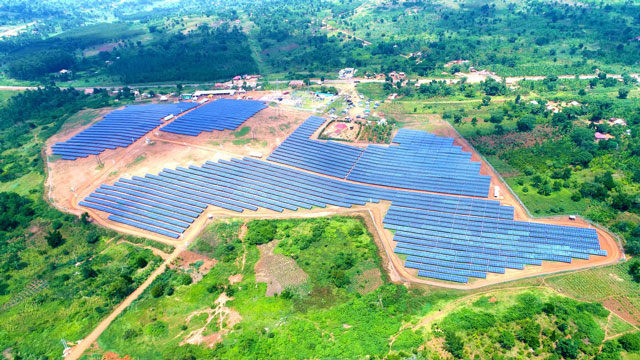In an era where climate change headlines dominate the news cycle and global leaders scramble to meet ambitious carbon-neutral targets, “green energy” has become a buzzword synonymous with hope, innovation, and sustainability. But what exactly does it mean? Beyond the eco-friendly branding and political soundbites, green energy represents a seismic shift in how we power our world one that’s rooted in science, economics, and a vision for a cleaner planet. Let’s unpack this term thoroughly, exploring its definition, technologies, benefits, challenges, and why it’s a cornerstone of our collective future.
Defining Green Energy
Green energy refers to energy derived from renewable, naturally replenished resources that produce minimal or no greenhouse gas emissions during operation. Unlike fossil fuels; coal, oil, and natural gas which release carbon dioxide (CO₂) and other pollutants into the atmosphere, green energy sources aim to harmonize human needs with environmental preservation. Think of it as nature’s way of offering us a power supply without an expiration date or a hefty ecological price tag.
The concept isn’t new. Humans have harnessed wind to sail ships and water to grind grain for centuries. What’s modern is the scale, technology, and urgency driving green energy today. It’s a response to a planet under pressure where 2024 tied with 2023 as the hottest year on record, according to NASA, and where the Intergovernmental Panel on Climate Change (IPCC) warns that global emissions must halve by 2030 to avert catastrophic warming.

The Pillars of Green Energy
- Solar Power
Sunlight is the ultimate free resource, and solar panels (photovoltaic cells) convert it into electricity with remarkable efficiency. From sprawling solar farms to rooftop panels in suburban homes, solar’s versatility is unmatched. In 2024, the International Energy Agency (IEA) reported solar as the fastest-growing energy source globally, with capacity doubling since 2020. - Wind Energy
Picture those towering turbines slicing through the air each blade a testament to engineering ingenuity. Wind farms, both onshore and offshore, harness kinetic energy from air currents to generate power. Denmark, a pioneer, now gets over 50% of its electricity from wind, while offshore projects in the North Sea signal a future where oceans become energy hubs. - Hydropower
The granddaddy of green energy, hydropower uses flowing water typically via dams to spin turbines and produce electricity. It’s reliable and accounts for roughly 16% of global electricity, per the IEA. Yet, its environmental footprint, including habitat disruption, has sparked debate about its “green” credentials. - Geothermal Energy
Beneath our feet lies a furnace of heat from Earth’s core. Geothermal plants tap this heat to produce steam and electricity, offering a steady, weather-independent source. Iceland, sitting atop volcanic hotspots, generates over 25% of its power this way a model for regions with similar geology. - Biomass
Organic matter wood, crop waste, even manure can be burned or converted into biofuels. When managed sustainably, biomass is carbon-neutral: the CO₂ released during combustion equals what the plants absorbed while growing. It’s a niche player but vital in rural areas and for heating. - Emerging Players: Tidal and Hydrogen
Tidal energy, driven by ocean currents, and green hydrogen, produced via renewable-powered electrolysis, are still maturing. Both promise to expand the green energy toolkit, with pilot projects like Scotland’s tidal arrays that show tantalizing potential.
Why Green Energy Matters
The case for green energy boils down to three pillars: climate, health, and economics.
- Climate Crisis Mitigation
Fossil fuels account for over 75% of global greenhouse gas emissions, per the United Nations. Green energy slashes this figure, offering a lifeline to keep warming below the critical 1.5°C threshold. Every gigawatt of renewable capacity added displaces millions of tons of CO₂ annually. - Public Health Boost
Burning coal doesn’t just warm the planet; it chokes it. Air pollution from fossil fuels claims over 7 million lives yearly, according to the World Health Organization. Green energy, with near-zero emissions, promises cleaner skies and fewer respiratory illnesses. - Economic Transformation
Jobs tell the story. The renewable sector employed 12.7 million people worldwide in 2023, per the International Renewable Energy Agency (IRENA), outpacing fossil fuel jobs in many countries. Plus, renewables dodge the price volatility of oil and gas, solar and wind, after all, don’t require refueling.
The Challenges
Green energy isn’t a silver bullet. Its adoption faces hurdles that demand ingenuity and investment.
- Intermittency
The sun doesn’t always shine, and the wind doesn’t always blow. Energy storage, think lithium-ion batteries or pumped hydro, is critical but expensive. Tesla’s Megapacks and experimental flow batteries are steps forward, yet scaling them remains a bottleneck. - Infrastructure Overhaul
Our grids were built for centralized fossil fuel plants, not decentralized renewables. Upgrading transmission lines and integrating smart grids could cost trillions globally, a price tag that spooks policymakers. - Land Use Conflicts
Wind farms and solar arrays need space which sometimes clashes with agriculture or wildlife. Governments have faced lawsuits over desert solar projects disrupting endangered species habitats, highlighting the trade-offs. - Upfront Costs
While renewables are cheaper over time, the initial investment can deter cash-strapped nations or communities.

Where We Stand
As of February 2025, green energy is no longer a fringe movement, it’s mainstream. The IEA projects renewables will supply 35% of global electricity by 2030, up from 29% in 2023. China leads in sheer volume, installing more solar capacity annually than the rest of the world combined, while Europe bets big on wind and hydrogen. The U.S., spurred by the Inflation Reduction Act, is racing to catch up, with tax credits fueling a clean energy boom.
Yet, the transition’s uneven. Developing nations, reliant on cheap coal, need financing and tech transfers to leapfrog to green systems prompting calls for richer countries to foot the bill.
What the Future Holds
Green energy isn’t just about swapping coal for wind or gas for solar. It’s a paradigm shift—a reimagining of how we coexist with our planet. Innovations like perovskite solar cells (cheaper, more efficient) and floating wind turbines hint at a future where clean power is ubiquitous. Meanwhile, grassroots movements, think community solar co-ops, prove this isn’t just a top-down revolution.
For now, the message is clear: green energy is our best shot at a sustainable tomorrow. It’s not perfect, and it’s not easy, but it’s ours to harness. As we stand at this crossroads, the question isn’t whether we can afford to go green, it’s whether we can afford not to.
Have thoughts on green energy’s future? Drop a comment below and join the conversation!
About Memoir Uganda – Showcasing Uganda
We are a comprehensive tourism and travel media company unleashing information about Uganda. We offer, among others, an all-inclusive guide on everything Uganda such as itineraries, consular information, timely and updated tour and travel news and general information about visiting and living in Uganda.
To us, Uganda is more than a tour destination. It is our homeland. Our knowledge about Uganda is ocean deep and we love showing the country’s splendid beauty to the world. We aim at sharing and showcasing Uganda to the tiniest bit, better than anyone else. We also aim at conserving our home land through our un wavered efforts towards climate change awareness.
Our Memoir Magazine showcases Uganda’s diverse potential in detail that is often left out and unknown. You ought never to miss a copy. We robustly believe that traveling should make the world a better place for everyone.






